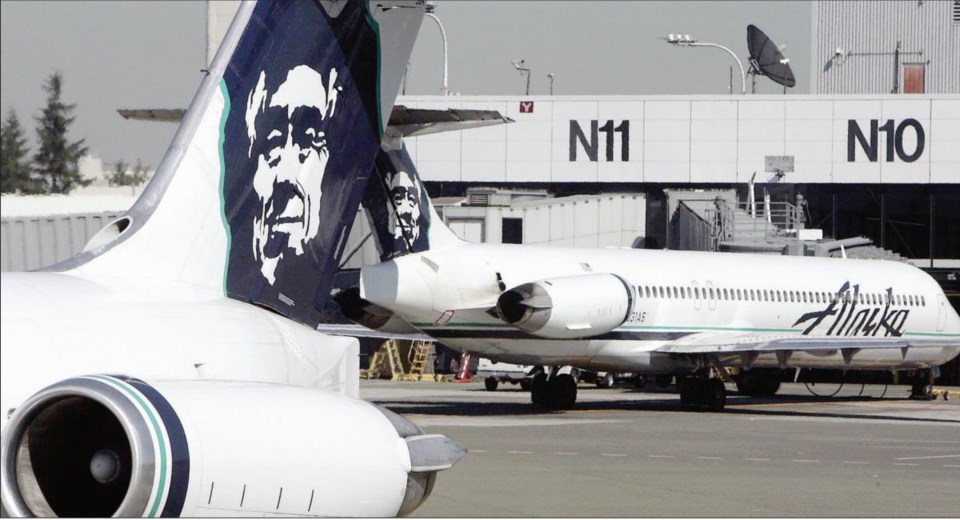Millions of frugal Canadians are choosing to fly from airports in the United States to save money, and a new report from the Conference Board of Canada predicts those numbers will continue to rise.
The Greater Victoria market "leaks" 29,200 passengers every year to airports south of the border, typically Bellingham and Seattle, for flights to Las Vegas, Palm Springs and other designations.
Saanich's Glenn Hartle is one of those frequent U.S. flyers. He's flown from the U.S. for about five years, and says he can get great seat sales and hotel rates, especially for destinations like Las Vegas.
A U.S.-based package can save him $300 to $400 on his flight, he said, even with a one-night hotel stay. Hartle has flown on Allegiant, an ultra low-cost airline, out of the Bellingham airport, which promotes itself as serving Canadians.
When the Hartle family flew to Florida for Christmas one year, flight costs out of Seattle for three people were $1,500, about $700 less than if they had flown from Victoria, he said.
Nationally, more than five million Canadians do cross-border airfare shopping and that figure is expected to grow, the Conference Board said in a report released Wednesday.
It's often families on holiday, who are lured to U.S. airports because a "perfect storm" of factors gives them a 30 per cent price break. Factors include wages, taxes and other costs, which can be lower in the U.S.
Canadian governments could reduce taxes and fees, which account for roughly 40 per cent of the total airfare differences, the Conference Board says. Short-term revenue loss to governments could be offset by direct and indirect tax revenues resulting from more people flying in this country.
Changes in Canadian policies could boost passenger numbers in this country by two million or more every year, the report said.
Carriers in Canada pay more for infrastructure than those in the U.S. Airports and navigation systems are largely paid for by users in this country, but that's not the case in the U.S., where airports are heavily subsidized, the report said.
David Goldstein, chief executive officer of the Tourism Industry Association of Canada, said the fact Canadians are "cross-border shopping" for airports masks a bigger issue. "We are shaping travel patterns around Canada instead of to Canada."
Goldstein said he understands the rationale for a family of four to leave for a trip to Hawaii from Seattle instead of Vancouver, but it has a serious ripple effect through the aviation industry in this country.
"That trip [from Seattle] means those carriers aren't servicing Canada, so they are not creating competition in Canada and driving prices down in Canada," he said. "We have the lowest airline usage per capita in the western world because prices are too high."
Geoff Dickson, president and chief executive of the Victoria Airport Authority, said when five million consumers are travelling over the border to fly, "you have to pay attention."
As for capital region residents who use American airports rather than Victoria's, he said the number isn't large but it's significant. "It is still something that we certainly have to pay attention to."
About 1.5 million passengers pass through the Victoria airport annually.
Dickson said the airport authority remains competitive, with some of the lowest landing fees for carriers in the country and a $10 airport improvement fee that's the second lowest in the country. It continues to work with airlines in hopes of attracting more non-stop service to popular destinations, thus improving convenience for travellers, he said.
Dickson said airport rental costs paid to the federal government are on a sliding scale, based on revenues, which can almost result in a disincentive for economic development at an airport. The airport attracts new tenants, but as it receives more revenues, rent goes up.
"That just doesn't seem fair," Dickson said. This year, the rent is expected to be $710,000, up from $697,000 last year. The Conference Board cited that as an issue for Canadian airports, recommending the system be replaced by a flat share of revenue or a fixed rate. Dickson said, however, that he's not convinced the U.S. airport model is sustainable in the long term.
Many American airports need to invest in infrastructure, and they look to the Canadian model as a pretty good example, he said.



